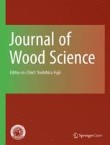2022 Citation Impact
2.9 - 2-year Impact Factor
3.0 - 5-year Impact Factor
1.269 - SNIP (Source Normalized Impact per Paper)
0.641 - SJR (SCImago Journal Rank)
2023 Speed
18 days submission to first editorial decision for all manuscripts (Median)
119 days submission to accept (Median)
2023 Usage
662,652 downloads
62 Altmetric mentions
